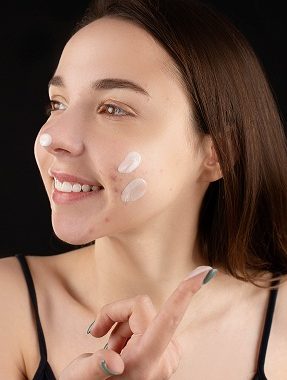
Acne is a common skin condition that affects millions of people worldwide, leaving behind not only the challenge of managing active breakouts but also the aftermath of stubborn acne scars. For those who have struggled with the aftermath of acne, microneedling has emerged as a promising and effective solution to diminish the appearance of acne scars. In this article, we will explore the journey of individuals with acne scars before and after microneedling, delving into the science behind this innovative cosmetic procedure.
Understanding Acne Scars:
Acne scars often result from the body’s natural healing process after a severe acne breakout. When the skin is damaged, whether by inflammation or infection, the body produces collagen to repair the affected area. In some cases, an excess or lack of collagen can lead to the formation of scars. Acne scars come in various forms, including atrophic scars (indentations in the skin) and hypertrophic scars (raised scars).
The Microneedling Solution:
Microneedling, also known as collagen induction therapy, involves the use of a device equipped with tiny needles to create controlled micro-injuries in the skin’s surface. These micro-injuries stimulate the skin’s natural healing process, prompting the production of new collagen and elastin. Collagen and elastin are essential proteins that contribute to the skin’s firmness, elasticity, and overall appearance.
The Microneedling Procedure:
Before the microneedling procedure, a topical anesthetic is applied to minimize discomfort. The microneedling device is then gently rolled or pressed across the targeted area, creating microscopic punctures. The depth and density of the needles can be adjusted based on the specific needs of the individual and the severity of their acne scars.
Before and After Microneedling:
-
Before Microneedling:
- Visible Scarring: Individuals with acne scars often experience a lack of confidence and may use makeup to camouflage the imperfections.
- Uneven Skin Texture: The skin may have a rough or uneven texture due to the presence of scar tissue.
- Limited Collagen Production: The damaged skin may struggle to produce adequate collagen, hindering the natural healing process.
-
After Microneedling:
- Improved Texture: One of the most noticeable changes is the improvement in skin texture. Microneedling stimulates collagen and elastin production, resulting in smoother, more even skin.
- Reduced Scarring: Over a series of sessions, microneedling can significantly reduce the appearance of both atrophic and hypertrophic acne scars.
- Enhanced Confidence: With the fading of acne scars, individuals often report increased confidence and a willingness to go makeup-free.
-
Long-Term Effects:
- Continued Collagen Production: The effects of microneedling extend beyond the immediate post-treatment period. The continued production of collagen contributes to ongoing improvements in skin quality.
- Minimized Fine Lines and Wrinkles: Microneedling’s collagen-stimulating effects can also help minimize fine lines and wrinkles, providing an additional anti-aging benefit.
Conclusion:
Microneedling has proven to be a transformative solution for individuals dealing with the lingering effects of acne scars. The before-and-after journey showcases not only the visible improvements in skin texture and scar reduction but also the positive impact on individuals’ self-esteem. As microneedling continues to gain popularity, its role in skincare routines is likely to expand, offering hope and confidence to those seeking effective solutions for acne scar management. If you’re considering microneedling, consult with a qualified skincare professional to discuss your specific needs and expectations.
Further Reading:
MICRONEEDLING CAN FADE SCARS, UNEVEN SKIN TONE, AND MORE
FAQs:
Do acne come back after microneedling?
Microneedling can improve acne scars, but it doesn’t prevent new acne breakouts. The treatment focuses on scar reduction by stimulating collagen production. To prevent acne recurrence, maintain a consistent skincare routine, including cleansing and using non-comedogenic products. Consult with a dermatologist for a comprehensive acne management plan.



